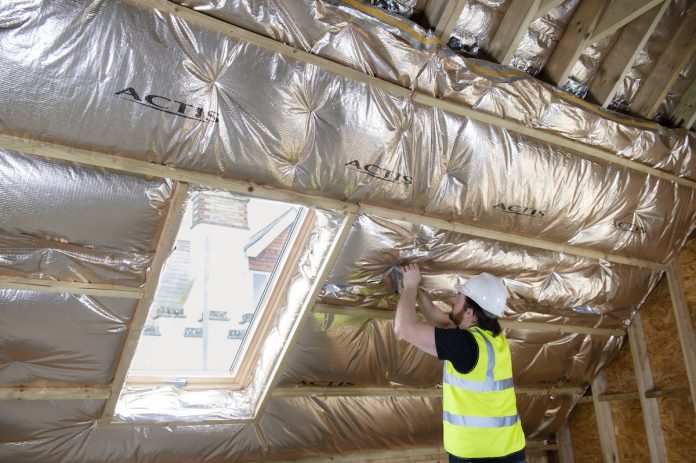
Actis explains how the right insulation can not only keep homes warm in the winter, but can also reflect heat away in the summer
As the Met Office issues a yellow weather warning with temperatures forecast to reach 30 degrees across the UK this weekend, Actis is warning specifiers of the role insulation has to play
Whilst some insulation products can make homes intolerably hot in high summer heat, reflective alternatives can have cooling properties.
Part O of UK building regulations requires architects to limit unwanted solar gains such as excess heat and to provide means to cool down residential dwellings.
Actis’ Triplex technology can reflect up to 90% of infrared radiation
Launched last month, Actis’s Eolis HC is a reflective insulation with an integrated vapour barrier.
Created from Actis’ revolutionary Triplex technology, the reflective films in Eolis HC can reflect 90% of infrared radiation.
The Triplex technology on which Eolis HC is based is created from a number of layers of reflective films, each separated by a thin layer of fibre, trapping air between each section, boosting thermal performance.
This means the insulation is not only able to retain heat in the winter and reduce energy costs, but can help prevent properties from overheating in the summer.
Mark Cooper, UK and Ireland sales manager at Actis, said: “”As we know, some forms of insulation can make houses blisteringly hot in the summer. Not so with our products, which are designed to help keep houses cool in summer as well as warm in winter.
“Using reflective insulation alone is not the answer to addressing the impact of climate change, but it will mitigate some of the effects by enabling houses to remain at a pleasant temperature.
“No form of insulation can address the significant effects of solar gain through windows though. That needs to be addressed by judicious use of curtains or siting the windows in strategic positions – a job for the architect.”
The 30 degree weather warning is part of a new colour-coded system
As heatwaves are occuring more often in the UK, the UK Health Security Agency (UKHS)A and the Met Office have launched a new alert system to help raise awareness of extreme heat events and reduce illness and deaths amongst vulnerable members of the population.
Under the new system yellow indicates risk to thsoe most vulnerable to high heat, such as children and the elderly.
Amber means the impact could affect the wider population and is likely to see a rise in hospitalisations, while red means a significant risk to life, even for healthy people, and a severe impact expected across all sectors.
You can learn more about how Actis’s insulation can reduce the risk of high heat here.













